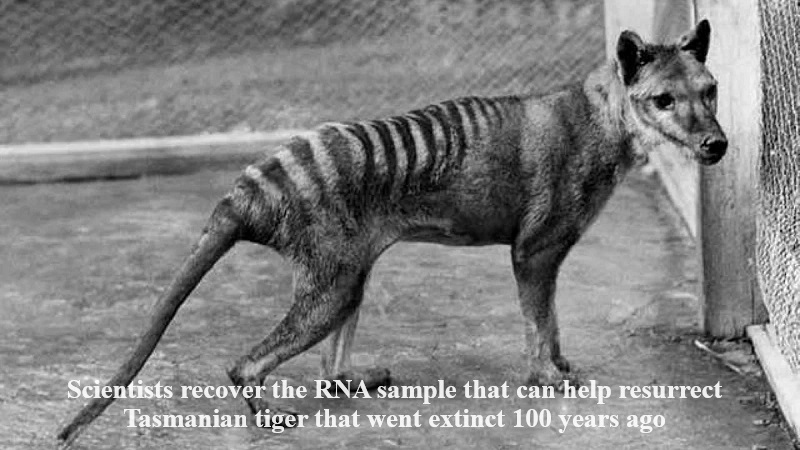
The Tasmanian tiger, a carnivorous animal officially known as a thylacine, which had become extinct nearly 100 years ago, may see a resurgence as scientists have managed to recover an RNA sample that holds the potential to aid in its resurrection.
RNA, or ribonucleic acid, is a genetic material present in all living cells and shares structural similarities with DNA. Scientists intend to leverage advancements in genetics, the retrieval of ancient DNA, and artificial reproduction techniques to revive this extinct species.
The RNA sample was obtained from the desiccated skin and muscle tissues of a Tasmanian tiger that had been preserved since 1891 in a museum in Sweden.
Andrew Pask, a professor at the University of Melbourne and the head of the Thylacine Integrated Genetic Restoration Research Lab, is spearheading this initiative. He emphasized the need to prioritize the protection of biodiversity to prevent further extinctions. However, he also acknowledged that this technology could be employed under exceptional circumstances where critical species have been lost.
This endeavor is a collaborative effort with Colossal Biosciences, based in Texas, and was founded by tech entrepreneur Ben Lamm along with Harvard Medical School geneticist George Church. Both have invested nearly $15 million in an endeavor to resurrect the woolly mammoth in an altered form.
The Tasmanian tiger, roughly the size of a coyote, disappeared from mainland Australia approximately 2,000 years ago but persisted on the Australian island of Tasmania. As the sole marsupial apex predator of modern times, it played a vital role in its ecosystem, albeit one that made it unpopular among humans.
The Tasmanian tiger, characterized by its shyness and semi-nocturnal habits, was hunted by European settlers in Australia during the 1800s, with these settlers attributing livestock losses to the thylacines. However, no concrete evidence has been found linking the Tasmanian tigers to livestock losses.
The last known thylacine living in captivity, named Benjamin, succumbed to exposure in 1936 at the Beaumaris Zoo in Hobart, Tasmania. This tragic event occurred shortly after the thylacines were granted protected status, but it was too late to save the species.
Apart from the distinctive tiger-like stripes on its back, the Tasmanian tiger bore a resemblance to a wolf. The arrival of humans in Australia approximately 50,000 years ago marked a period of significant population decline for these animals.

Post Your Comments